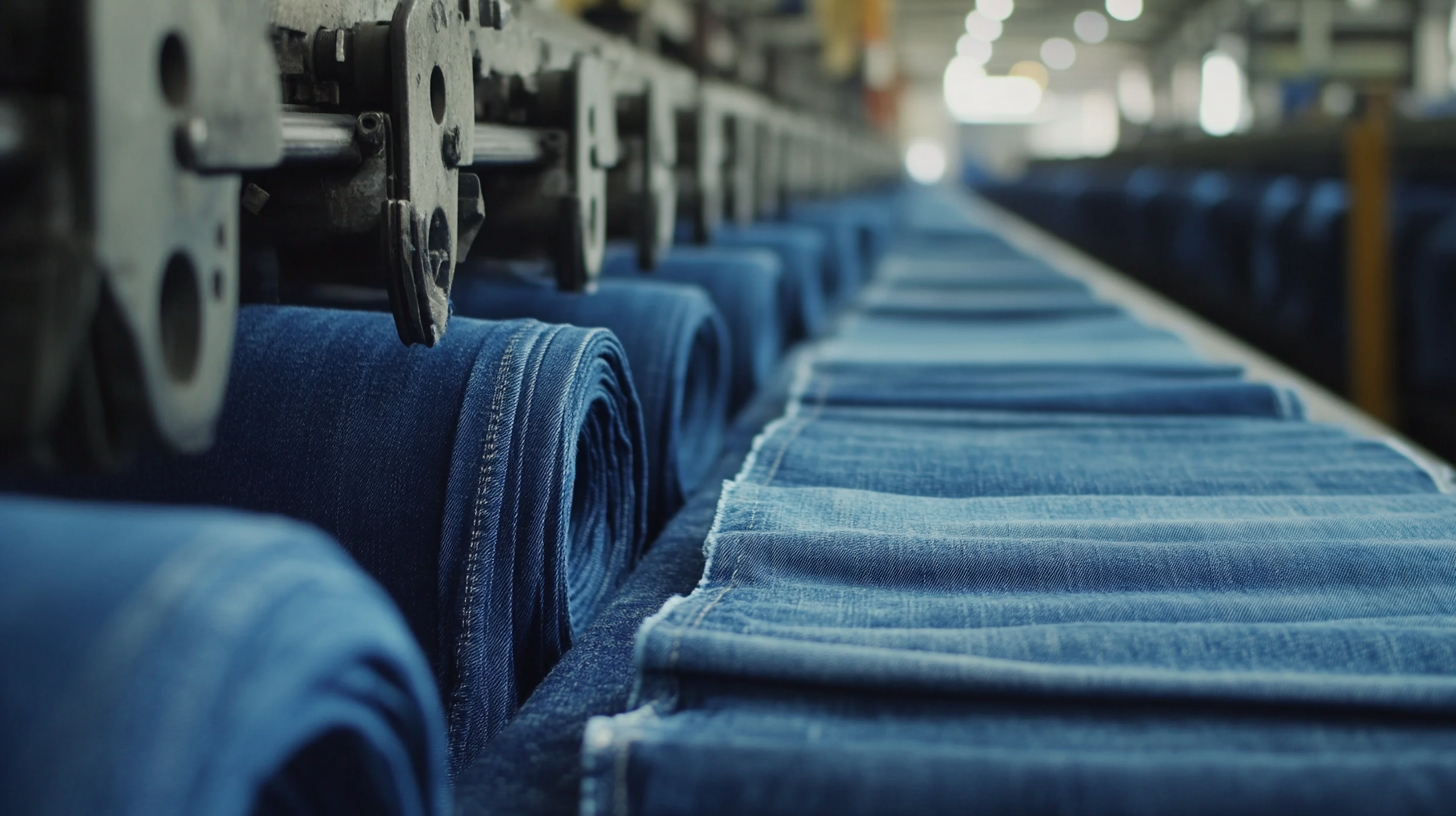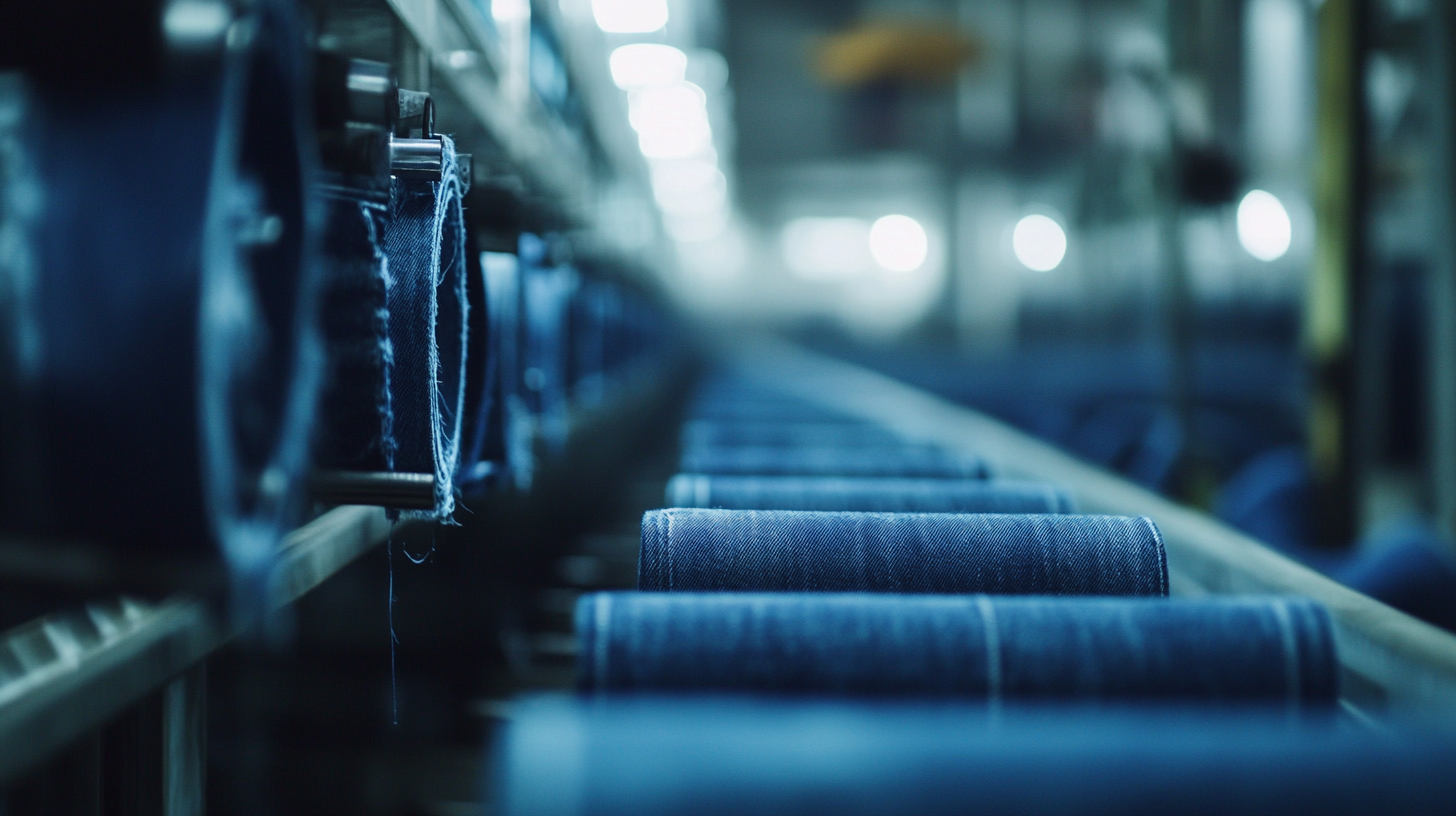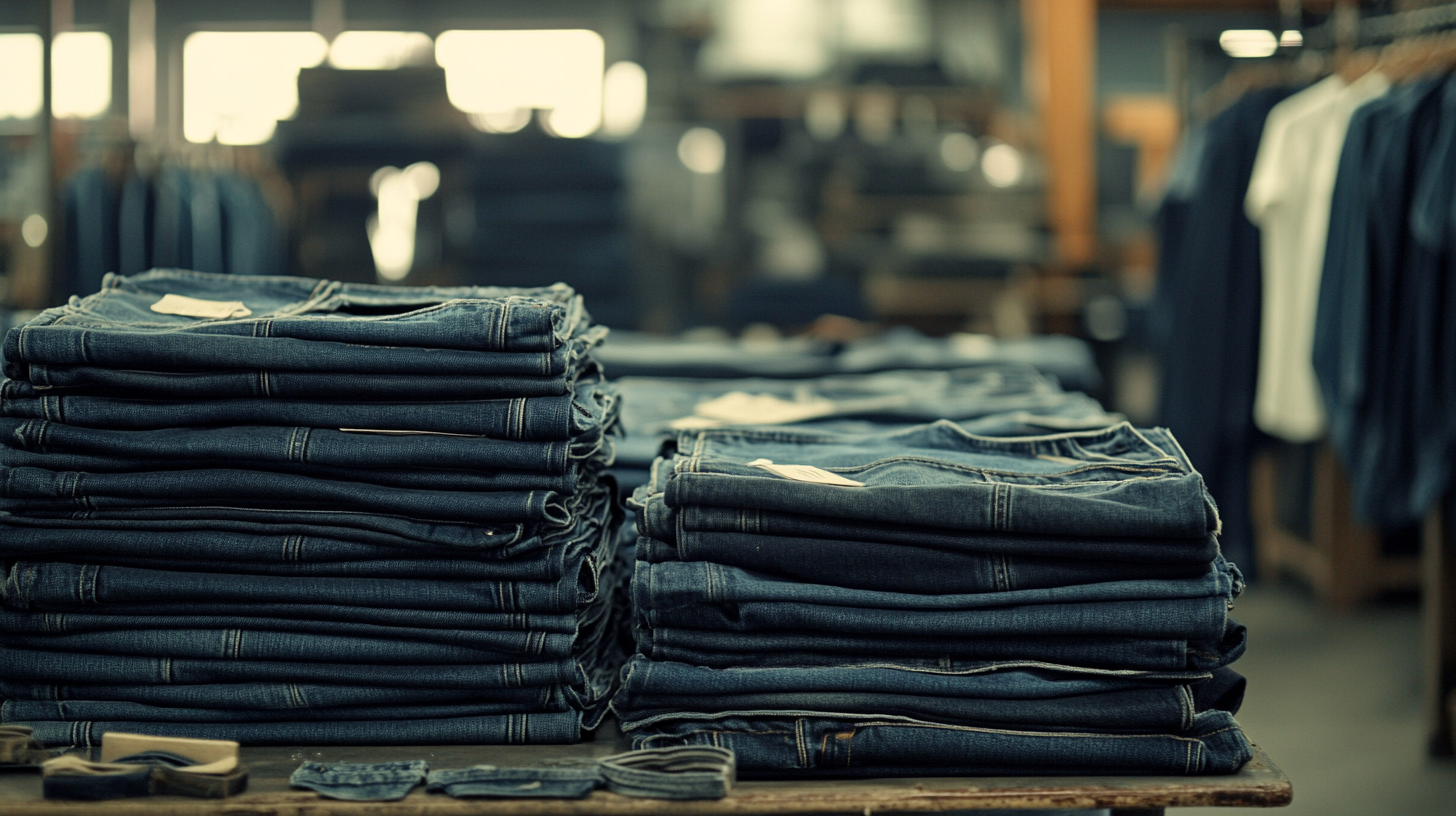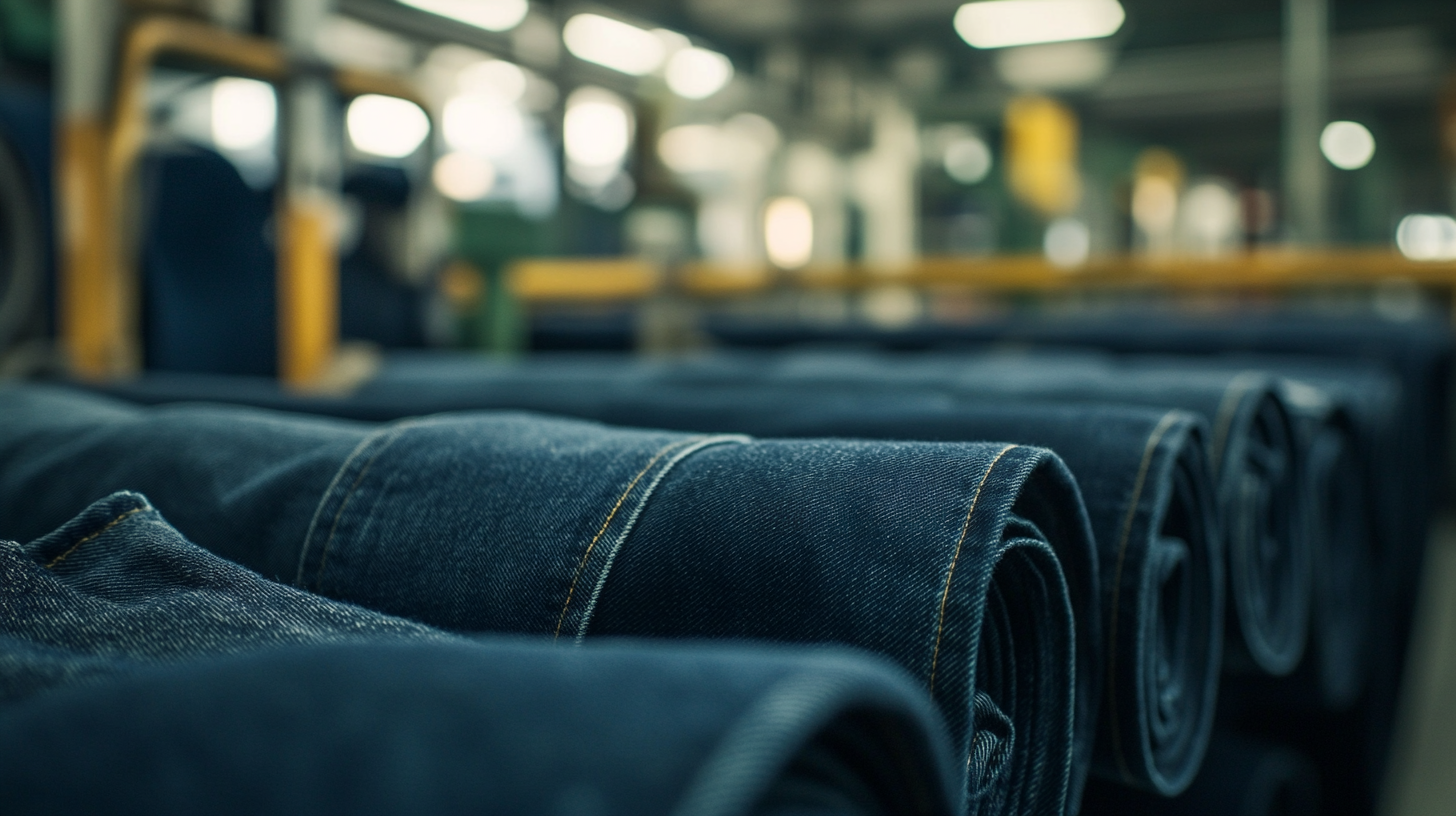As the fashion industry increasingly confronts the challenges of sustainability, innovative materials like Sulphur Denim are gaining prominence as viable solutions. Recent studies reveal that the denim industry is responsible for about 1.5 billion kilograms of carbon emissions annually, alongside significant water usage and toxic chemical discharge. In this context, Sulphur Denim emerges as a game-changer, offering a more environmentally friendly dyeing process that minimizes water consumption and eliminates harmful chemicals typical in conventional denim production. This material not only reduces environmental impact, but also meets the rising consumer demand for eco-conscious products.
Moreover, according to a report by the Global Fashion Agenda, sustainable fashion is projected to reach $8 trillion by 2030, indicative of a significant shift in consumer preferences towards ethically produced clothing. Sulphur Denim plays a critical role in this transformation, facilitating circular fashion practices and enabling brands to enhance their supply chain sustainability. As fashion brands increasingly scrutinize their operations to align with sustainability goals, Sulphur Denim stands out as a compelling option, harnessing the dual benefits of environmental responsibility and appealing aesthetics for modern consumers.

Sulphur denim is making waves in the sustainable fashion industry, serving as a game-changer for eco-conscious brands and consumers alike. This innovative fabric is produced using sulphur dyes, which not only create a distinctive color range but also minimize environmental impact compared to traditional dyeing methods. By adopting sulphur denim, fashion brands can significantly reduce water usage, energy consumption, and harmful chemical runoff, aligning with the urgent need for sustainability in the textile supply chain. A major advantage of sulphur denim is its durability and fade resistance. The dye actually penetrates deep into the fabric fibers, ensuring that the color remains vibrant and intact over time. This characteristic not only promotes longevity in garments but also contributes to a reduction in waste, as consumers won't feel the need to replace their denim as frequently. Moreover, the use of natural raw materials in the production process further enhances the eco-friendliness of sulphur denim, making it a preferable choice for those invested in sustainable fashion. As awareness of environmental issues grows, consumers are increasingly seeking out brands that prioritize sustainability. Incorporating sulphur denim into collections allows fashion brands to cater to this demand while differentiating themselves in a crowded market. The movement towards eco-friendly materials, such as sulphur denim, signifies a shift towards a more responsible fashion industry—one where both style and sustainability can coexist harmoniously.

The production of sulphur denim is revolutionizing sustainable fashion supply chains by employing environmentally friendly practices that reduce water usage and chemical waste. Unlike conventional denim, which typically requires large quantities of water and toxic dyes, sulphur denim utilizes sulphur dyeing methods that not only require less water but also produce minimum waste. According to a report from the Fashion Industry Sustainability Report 2023, brands that have adopted sulphur dyeing techniques have seen a reduction of up to 60% in water consumption compared to traditional methods.
The process of creating sulphur denim begins with the selection of organic cotton or recycled fibers, further enhancing its sustainability credentials. During the dyeing process, sulphur dyes are applied at high temperatures, which not only allows for vibrant colors but also ensures that the dyes are fixed onto the fabric effectively, leading to improved durability. A case study from the Global Sustainability Fashion Index revealed that brands using sulphur dyeing have been able to achieve up to a 30% reduction in overall carbon emissions, aligning their production methods with global climate goals.
Additionally, the finishing processes of sulphur denim are designed to minimize environmental impact. Techniques such as enzyme treatments and laser finishing help decrease the need for water and chemical runoff, maintaining the integrity of local ecosystems. As a result, sulphur denim not only provides a sustainable alternative for consumers but also sets a benchmark for brands striving toward a more responsible and eco-conscious fashion supply chain.

When it comes to sustainable fashion, the materials used in denim production play a crucial role. Sulphur denim, an innovation that has gained traction in recent years, offers distinct advantages over traditional cotton denim. One of the most notable benefits is its lower environmental impact. Unlike conventional denim, which often requires extensive water use and heavy chemical treatments during the dyeing process, sulphur denim utilizes a more streamlined approach that reduces both water consumption and the necessity for harmful chemicals. This makes it a more eco-friendly option for brands looking to minimize their carbon footprint.
Moreover, sulphur denim is known for its durability and unique aesthetic properties. The dying process produces deep, rich colors that tend to fade beautifully over time, allowing for a stylish vintage look without the need for aggressive washing or processing. Traditional cotton denim, however, can sometimes struggle to maintain its integrity, often requiring more intensive care to prevent wear and tear. As a result, garments made from sulphur denim tend not only to last longer but also contribute to a more circular fashion economy, as they are less likely to end up in landfill.
Additionally, sulphur denim is often more cost-effective for manufacturers. The production process is generally less labor and resource-intensive compared to traditional cotton denim, which translates to potential savings on both production and sourcing. This economic advantage empowers brands to adopt sustainable practices without sacrificing profitability. As the fashion industry continually seeks ways to innovate and become more eco-conscious, sulphur denim stands out as a practical and stylish alternative to traditional denim options, proving that sustainability and style can go hand in hand.

The emergence of sulphur denim as a sustainable fabric is a transformative step for the fashion industry, particularly in the quest to establish circular fashion supply chains. Unlike conventional denim processing that often relies on harmful dyes and chemicals, sulphur denim utilizes a natural dyeing technique that minimizes environmental impact. This method not only reduces water pollution but also lowers the overall carbon footprint associated with the production process.
Building a circular fashion supply chain with sulphur denim hinges on several key principles. First and foremost, the durability of sulphur-dyed fabrics enhances the lifespan of garments, encouraging consumers to invest in quality items that last longer. This resilience aligns with the circular economy model, which seeks to extend the lifecycle of products through repair, reuse, and recycling. By integrating sulphur denim, brands can offer consumers a sustainable choice that aligns with ethical fashion values.
Moreover, the implementation of sulphur denim can foster a stronger connection between brands and their customers. As consumers increasingly seek transparency and sustainability, using eco-friendly materials like sulphur denim not only meets this demand but also bolsters brand loyalty. This initiative invites consumers to actively participate in the circular economy by appreciating their garments as part of a larger ecological system, ultimately reducing waste and promoting a more responsible production cycle.
As the fashion industry increasingly strives for sustainability, sulphur denim emerges as a key player in shaping eco-friendly supply chains. The unique dyeing process employed in sulphur denim not only enhances its aesthetic appeal but also aligns with the critical sustainability goals many brands are adopting. Recent advancements demonstrate how brands are refining their methods to minimize environmental impact while meeting consumer demand for style and quality.
Notably, innovative dyeing processes are at the forefront of this transformation. For instance, some companies are now able to produce sustainable black denim using a clean sulphur dyeing technique that avoids harmful chemicals, setting a precedent for future practices. This not only ensures that the final product is environmentally friendly but also addresses rising concerns about chemical usage in traditional dyeing processes. The integration of water-saving technologies and sustainable materials further allows denim producers to reduce their ecological footprint significantly.
Future trends in denim are steering towards darker shades and richer colors, benefiting from advanced dye technologies that promise less water consumption and improved resource management. As the industry embraces these changes, sulphur denim stands out as a practical solution, proving that it’s possible to balance style with sustainability. The collective shifts championed by leading producers pave the way for a more sustainable future in fashion, ensuring that denim remains a staple while adapting to eco-conscious values.
